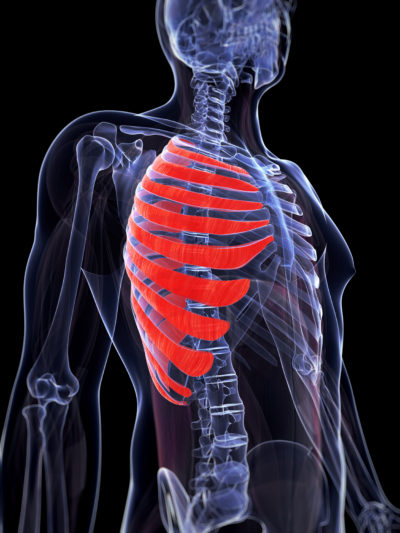
So, how about this? I have plantar fasciitis right now and yesterday I got to dissect the plantar fascia in the cadaver and look at its relationship to the muscles of the calf, always a concern for people suffering from this type of injury. This was one of the incredibly interesting things from Day 3 of my cadaver lab training with Tiffany Cruikshank at the Laboratory of Anatomical Enlightenment in Phoenix, AZ.
As I’ve been blogging about it all week, you’ve been reading about the progression we’ve been going through. We started with a removal of the superficial layers and then worked to the layer of fascia. Yesterday, we started to separate muscle and give them more definition so we could see the impact of action on the muscle as we moved the limbs. We also were able to better examine the muscles and look for their relationship to one another.
Here are some take-aways from yesterday’s experience:
Muscles in the body are layered upon one another. You might read this and go, “Duh! No kidding!” But honestly, when you study muscles in anatomy books, they are presented individually, so that one can better learn about each one as a unit. However, in the actual body, you are able to see how the muscles layer upon one another and the fascia is the container that holds the muscles. For instance, yesterday, we reflected back the trapezius  and we were able to see the rhomboids underneath. This visual gives you a greater understanding of how muscles work much more collaboratively than you can appreciate when you study them from books.
This understanding has implications for yoga teachers because it demonstrates how hard it is to answer a student’s question that goes something like this: ” I have a pain right here (student points to part of body). What could that be from?”
or related question:
” I feel tight right here (student points to part of body). What can I do to stretch this?”
Once you appreciate the layering of the muscles in the body, you quickly realize that it’s hard to isolate one muscle over another and that questions like these are better answered with a “broad net” approach, meaning, you cast a wide net and then work inward to try to isolate what could be happening but answering it with a variety of suggestions. It’s really more like an investigation, as we called it here in training, rather than an exact science.
“But there has to be answer!” You might be saying, upon reading this.
I think what I’m realizing, going through this experience, is that there isn’t always an exact answer, but certainly the more you know, the better off you’ll be.
The second broader understanding or application of viewing the presentation of muscles in their layered form (with respect to one another) is that it highlights the importance of moving the body. I don’t just mean moving the body in yoga practice but yes, that is part of it, but also moving the body in terms of rolling, using massage balls and other techniques such as myofascial release. Because of the arrangement of the muscles, it’s so hard to isolate one over the other. And, why would you? It’s better to work with an entire area because then you appreciate the collaborative effort of the body to create action and when there’s dysfunction, you cast a broad net to improve function.
I hope you’re enjoying these summaries of my time here at the lab. Post a comment or comment on my social media pages and let me know.
Off to Day 4!
